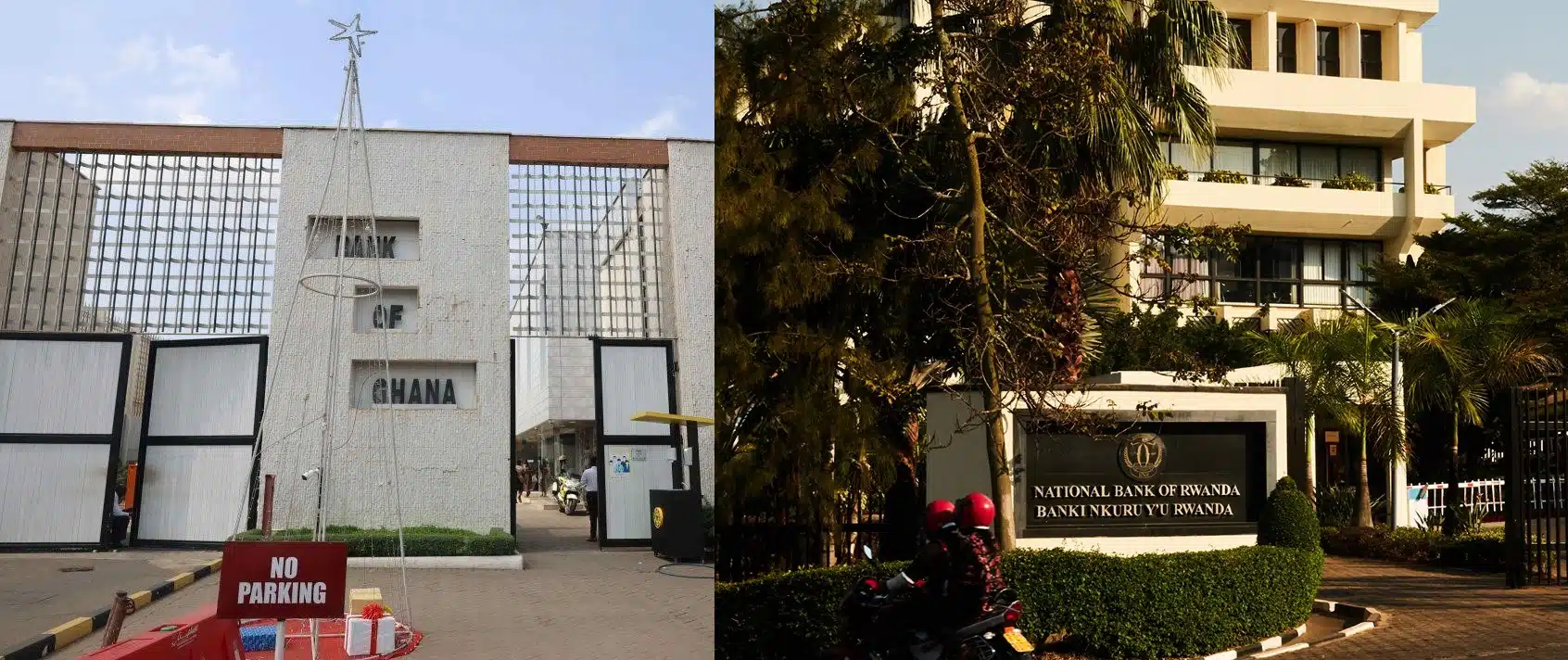In a small market town in northern Ghana, Mariama sells tomatoes, rice, and detergent under a faded umbrella. Like many micro-entrepreneurs across Africa, she uses her mobile phone not just to communicate, but to receive payments, send money to her suppliers, and top up her children’s school account. But on most days, the 3G signal flickers or vanishes altogether. For minutes or hours, digital services become inaccessible, and business slows to a crawl.
In regions like these, connectivity is not a given. It’s a privilege, fragile, fleeting, and often uneven. And yet, millions of people transact, save, borrow, and invest within this infrastructure gap every day. How? Through the ingenuity of offline-first fintech.
Offline-first isn’t just a design preference. It’s a technical and strategic imperative in Africa, where patchy networks meet growing demand for digital financial services. This architecture flips the conventional model: it treats offline as the default, not the exception.
It anticipates the drop, caches data locally, syncs intelligently, and relies on tools like USSD, SMS, and agent networks to keep the financial engine running even when the internet goes dark.
This piece explores the mechanics and infrastructure choices behind offline-first fintech, how products are engineered to survive (and thrive) where the signal fails. We’ll look under the hood at the protocols, storage strategies, syncing models, and hybrid stacks that power resilient financial systems across the continent.
Because for fintech to be truly inclusive in Africa, it must work not only when the connection is strong, but especially when it’s not.
The offline-first approach
In most mature fintech markets, products are built on the assumption of always-on connectivity. However, in many parts of Africa, this assumption breaks down. In some regions, users toggle between 2G and no signal at all. Mobile data is expensive. Network outages are frequent. Power is unstable. Against this backdrop, the idea of an “offline-first” approach isn’t just a nice-to-have — it’s a strategic necessity.
Offline-first is a product and technical mindset that treats disconnection as the default state, not the exception. It anticipates unreliable infrastructure and plans for it: building applications that cache data locally, sync intelligently when the connection returns, and leverage GSM-based protocols like USSD and SMS to function without the internet.
According to GSMA’s Mobile Internet Connectivity Report 2023, approximately 47% of sub-Saharan Africa’s population remains offline, and mobile broadband coverage gaps persist for over 15% of the population, particularly in rural and remote regions.
Even where coverage exists, affordability is a steep barrier: mobile users in Nigeria and Ethiopia spend as much as 6–9% of their monthly income on data bundles, far above the UN’s 2% affordability threshold.
In this context, a fintech product built on the assumption of stable, continuous connectivity will fail large swaths of its intended user base.
Offline-first design flips the traditional software paradigm. It assumes network failure as the default, not the edge case. This mindset drives fintechs to prioritise:
- Local data caching (e.g. for pending transactions),
- Asynchronous syncing, and
- Multi-channel redundancy using tools like USSD, SMS, and agent-assisted inputs.
Critically, this isn’t just a low-income workaround. It’s a resilience strategy.
Core Technologies Powering Offline-First Fintech
Offline-first financial systems are deeply technical beneath their simple interfaces. They rely on intentional infrastructure and platform decisions that ensure transactions can be initiated, queued, and finalised, even in the absence of connectivity.
USSD Gateways: The Bedrock of Internet-Free Transactions
Unstructured Supplementary Service Data (USSD) is the original workhorse of offline fintech. It allows users to interact with financial services over GSM networks, no smartphone, no data plan, just a SIM card and a signal.
From checking account balances to transferring money, USSD sessions are fast, text-based, and mobile network-driven. A typical USSD interaction involves the user dialling a code (e.g., *123#), initiating a session with a USSD gateway that connects to the backend service via protocols like SMPP or HTTP.
With over 950 million mobile subscribers in Africa, according to Ericsson’s November 2024 Mobility Report, most of whom use feature phones, USSD enables banking and payments without the need for apps, data, or smartphones.
Key Architecture Components:
- USSD Gateway: Connects mobile network operators (MNOs) to fintech backends.
- SMPP/HTTP APIs: Protocols for real-time communication with core banking systems.
- Session Management Logic: Ensures user journeys (e.g., transfers, airtime top-up) complete within 3-minute timeout windows.
- Authentication: Often via 4–6 digit PINs; some implement SIM-to-identity binding at the telco layer.
Example: Moniepoint (Nigeria)
Moniepoint’s USSD interface (*5573#) processes millions of monthly transactions, especially in rural agent locations where internet-based apps are unreliable. Their gateway prioritises lightweight calls to their core system with a retry fallback architecture for session drops.
SMS Infrastructure: Messaging as a Transaction Layer
When USSD is unavailable or asynchronous messaging is preferred, SMS comes into play. Though technically simpler, SMS is a powerful fallback for delivering alerts, initiating transactions, or enabling basic customer service.
Typically used for notifications and OTPs, some fintechs layer SMS with simple command interfaces (e.g., “REPAY 1000” to repay loans).
Implementation:
- SMS APIs & Gateways: Tools like Twilio, Africa’s Talking, or local telcos offer APIs for outbound and inbound messages.
- Two-Way Interactions: Basic logic flows (e.g, “Reply 1 to approve”) enable low-latency interactions. This is common for micro-lending, savings, and insurance notifications
- Failover Channels: SMS often acts as a fallback/redundancy for USSD, OTP delivery, and transaction confirmations.
Tools in Use:
- FrontlineSMS: Enables offline message automation using a basic computer + connected GSM modem.
- SIM Application Toolkit (STK): Allows for preloaded menu-based actions directly on SIM cards.
- Africa’s Talking SMS API: used by over 25,000 developers across Africa for transactional messaging.
Example: M-KOPA (Kenya/Uganda)
For device financing and pay-as-you-go energy services, M-KOPA relies on SMS-based transaction confirmations and balance notifications for its over 3 million users, particularly in remote villages with limited 3G connectivity.
Queues & Caching: How data travels between states, syncing the disconnect
Designing for offline-first doesn’t mean staying disconnected. It means making the disconnect invisible to users while maintaining integrity, security, and continuity.
When a mobile money agent in rural Katsina records a customer deposit on their Android POS, there’s a high chance the device won’t have internet access. But the transaction must still “exist”, not just as a fleeting action on the screen, but as a record the system can later verify, reconcile, and act upon.
This is the heart of offline-first fintech: designing systems that gracefully fall back when networks fail, and just as gracefully catch up when they return.
According to a 2022 survey by CGAP, 61% of digital finance users in rural Africa experience network outages at least once a week. This makes seamless offline-to-online syncing a foundational requirement for trust.
Let’s walk through how that happens, technically.
Local queues & client-side caching: holding data until the cloud is ready
When users interact with fintech apps or POS systems in offline mode, their actions (e.g., initiating a cash deposit or registering a new customer) are captured and stored locally, typically in:
- SQLite (for Android native apps),
- Room (Google’s abstraction layer over SQLite),
- Realm or Hive (for cross-platform apps like Flutter), or
- IndexedDB (for progressive web apps).
These systems act as miniature local databases, holding transaction data until sync is possible. Transaction payloads are often queued with metadata like:
- Timestamp
- Device/User ID
- Geo-coordinates
- Network status at time of entry
This information is added to a sync queue, a first-in, first-out list of events waiting to be delivered to the backend.
Think of it like sending a WhatsApp message in aeroplane mode. The message stays in a local queue, visible with a grey clock icon, and gets sent automatically when the connection returns. Fintech apps apply the same idea, but with stricter requirements for auditability, security, and consistency.
Syncing logic & conflict esolution
When the device eventually detects connectivity, whether Wi-Fi, 3G, or even an intermittent signal, the app attempts to sync with the server. But this isn’t a simple upload. It’s a carefully managed process that ensures:
- No duplicates are recorded
- Nothing is lost in transmission
- System rules (like double-entry validation or balance checks) still apply
Most fintechs use a background process called a sync worker. This piece of software:
- Monitors the sync queue
- Bundles multiple entries to reduce bandwidth
- Signs the payload (for security)
- Sends it to a specific API endpoint
- Waits for confirmation before marking entries as “synced”
If the sync fails?
The system uses retry strategies like exponential backoff (wait longer after each failed attempt) and error logging to avoid user disruption. Some fintechs allow partial syncs, prioritising high-value or time-sensitive transactions first.
Syncing logic includes conflict detection. This involves:
- Checking if the same transaction already exists in the backend (via transaction hash)
- Comparing timestamps and user IDs to resolve order
- Using Last-Write-Wins (LWW) or manual reconciliation rules to determine which version is authoritative
To protect offline transaction data, fintechs encrypt it locally using AES-256 and sign it with device-bound tokens or JWTs, ensuring that queued actions can’t be tampered with or spoofed during sync. Devices are also authenticated on reconnect using SIM-binding or IP tracking.
On the user side, clear communication is essential; apps show sync statuses (e.g., “3 transactions queued”) and notify users when actions are confirmed. By combining robust security with transparent UX, offline-first systems maintain user trust while ensuring data integrity and compliance, even in low-connectivity conditions.
Infrastructure decisions: Where the Stack touches grass
Offline-first fintechs may look simple on the surface: an agent app, a few buttons, a confirmation screen, but behind the scenes, they rely on carefully engineered infrastructure designed for latency, reliability, and regional constraints. In offline-first fintech, infrastructure isn’t abstract; it touches grass. Devices run in the wild, agents work from village kiosks, and syncs happen via patchy cell towers. Every technical choice must respect this ground reality.
This section explores the foundational infrastructure decisions that power such systems and the tradeoffs fintechs face when deciding whether to build from scratch or buy off-the-shelf solutions.
Where to Host: Cloud, On-Prem, or Hybrid?
The first major decision is where the backend lives. While cloud computing is the default in most global markets, offline-first fintechs serving low-connectivity regions often face unique pressures:
| Deployment | Pros | Cons |
| Cloud-only (e.g., AWS, GCP, Azure) | Scalable, global reach, fast iteration | Latency in rural Africa, dependency on stable internet, possible data residency issues |
| On-premise (in-country servers, telco collocation) | Latency in rural Africa, dependency on stable internet, and possible data residency issues | High capex, harder to maintain, requires in-house infra team |
| Hybrid (local core + cloud services) | Local speed + global intelligence (analytics, ML) | Complex design, difficult to monitor and secure |
Build-vs-Buy Tradeoff: Some startups partner with local cloud providers (e.g., Layer3, MainOne in Nigeria or Safaricom Enterprise in Kenya) to reduce latency without running their own data centres. Others build in-house because they require low-level control over storage, sync protocols, or integration with telecom infrastructure..
Event-Driven Architectures: Syncing at Scale
Offline-first systems must handle bursts of delayed activity, e.g., thousands of devices reconnecting and syncing backlogged transactions at once. This requires a backend designed around event-driven principles.
Typical stack components:
- PostgreSQL with Debezium or Logical Replication for capturing database changes.
- Kafka or NATS for queuing and distributing sync events.
- Redis or Amazon SQS for short-term message buffering.
- gRPC or GraphQL interfaces for fine-grained sync APIs.
Some fintechs build custom sync gateways, specialised APIs that handle batching, deduplication, retries, and status tracking, acting as an intelligent layer between devices and the core database.
Case Study: Musoni System (Kenya)
Musoni’s Digital Field Application is built with low-connectivity environments in mind. Designed for microfinance officers working in remote areas, the app runs entirely offline, allowing staff to register clients, assess loans, and record repayments without needing a live internet connection.
Data is stored securely on the device and only synced back to the core banking system once the officer regains connectivity. To save space and bandwidth, only relevant client and loan data is cached locally, and a validation layer ensures transactions aren’t duplicated during sync. This approach has helped Musoni-powered MFIs serve rural communities with greater consistency and speed.
Tooling and Offline-Ready Frameworks
On both the client and server sides, fintechs must choose tools that handle offline persistence, background sync, and error resilience well.
Backend Choices:
- Firebase + Firestore Offline (good for small-scale apps, but limited in financial-grade control)
- CouchDB + PouchDB (open-source, supports bidirectional sync)
- Hasura (GraphQL) + Postgres (provides granular caching and query control)
- Supabase (Postgres-based backend with offline support in beta)
Build-vs-Buy Consideration: Buying into Firebase or Supabase accelerates prototyping but often lacks the depth of control required for fintech compliance. That’s why more mature fintechs (e.g., Flutterwave, Moniepoint) build in-house backends with strict controls over sync, auth, and audit logs.
Mobile SDKs and Storage Tools:
- Room (Android) and CoreData (iOS) — native, proven, performant
- Hive / Drift / ObjectBox (Flutter) — light, reactive, battery-friendly
- Redux Offline / WorkManager — ensure transactions retry even after crashes or reboots
Case Study: Moniepoint (Nigeria)
Moniepoint’s POS systems operate offline for hours at a time, especially in areas like Ogun or Benue states. Their devices use local encrypted storage to queue transactions and WorkManager to schedule retries based on network availability. The company built its transaction ingest API with retry tokens and a server-side ledger reconciler to manage syncing at scale.
Data Compliance and Residency
African data laws are evolving rapidly. The Nigerian Data Protection Act (NDPA) and the Kenyan Data Protection Act (2019) both introduce residency clauses that influence how financial data is stored and processed.
Infrastructure Implication: If a fintech stores transaction data outside of Nigeria or Kenya without a licensed partner or regulator approval, it may face fines or license issues.
Thus, many choose to:
- Store raw transaction data in-country
- Use cloud providers for metadata, analytics, or logging
- Use hybrid encryption so that data stored offshore is unreadable without local decryption keys
Case Study: M-KOPA (Kenya/Uganda/Nigeria)
M-KOPA uses a major cloud services provider for machine learning analytics and user engagement modelling, but hosts all customer repayment data and device logs locally through in-country partnerships. Their architecture enables real-time decision-making at scale while remaining compliant.
Security and compliance in a semi-disconnected world
Financial systems don’t just move money, they move risk. And in an offline-first world, where transactions can occur hours before syncing, risk compounds fast. That’s why securing offline-first fintech requires layered, context-aware safeguards.
Securing transactions in the wild
When a user or agent initiates a transaction offline, it must be secure at rest and in transit, even if delayed. Common strategies include:
- Encryption at rest: Local data (transactions, identity documents) is encrypted using AES-256 and stored with device-bound keys.
- Digitally signed transactions: Each transaction is signed using a private key or a JSON Web Token (JWT), preventing spoofing or replay attacks.
- Token-based authentication: Devices generate and store session tokens for offline auth, which expire after a set time or usage count.
For example, some POS systems require a sync “handshake” before high-value operations, blocking any transactions exceeding a threshold until the device re-verifies with the backend.
Fraud prevention without real-time checks
With transactions occurring offline, fintechs can’t rely on live fraud scoring or machine learning to flag suspicious behaviour. Instead, they implement offline risk rules, such as:
- Daily transaction caps
- Time-based limits (e.g., max 3 withdrawals in 1 hour)
- Auto-lock triggers if the GPS location differs significantly from the previous sync
Once online, the backend performs delayed fraud analysis, flagging anomalies retroactively and freezing accounts if needed.
KYC and AML in offline mode
Compliance doesn’t pause when connectivity drops. Many platforms use tiered KYC models, where:
- Basic features are available after SIM verification or BVN (Bank Verification Number) validation.
- Full access requires document upload or in-person verification, often handled by agents.
Documents captured offline are encrypted, stored, and uploaded later for validation.
Auditability and regulatory reporting
To remain compliant, fintechs must prove that no transaction has been tampered with during offline execution. This is achieved by:
- Assigning each action a unique hash or UUID
- Keeping a tamper-proof transaction log on-device
- Syncing that log in full, even failed transactions, to the backend
Some platforms implement Merkle tree hashes (used for data verification and synchronisation) or append-only ledgers to verify offline activity matches server-side state, ensuring audit trails are complete and compliant with local financial regulations.
In conclusion, offline-first fintech is a response born not of constraint, but of understanding. It’s what happens when fintech builders look beyond urban connectivity and design for the other half, the millions who rely on USSD menus, agent kiosks, or intermittent 2G networks to participate in the financial system.
In this piece, we explored how leading African fintechs are reengineering trust from the ground up. They’re caching transactions locally and syncing later. They’re turning smartphones and POS terminals into intelligent, secure edge devices. They’re building agent networks that act as extensions of infrastructure, not just sales channels, while embedding compliance, encryption, and auditability into systems that work even without a signal.
Offline-first isn’t just about going low-tech. It’s about going deeper into the everyday lives, constraints, and needs of the people fintech was meant to serve.












